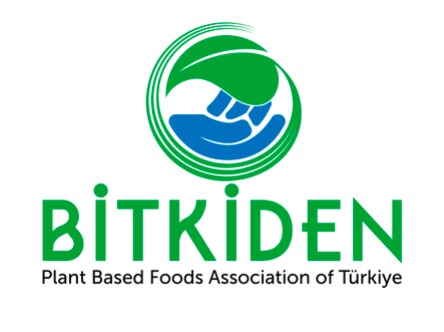In the research report published by EIT Food (European Institute of Innovation and Technology), the data was collected from the Citizen Participation Forum, an online community with approximately 300 members from 17 European countries. 89 members who wanted to discuss food and were generally knowledgeable participated in the research. The aim of the study was to gain a deeper understanding of consumer awareness and perceptions of ultra-processed foods (UPF), how healthy and sustainable they perceive UPF to be, under what conditions they consume them, whether they are satisfied with their consumption levels, and whether they wish to reduce them.
Definition of UPF
According to the NOVA classification, the UPF category is defined as ‘a range of industrial processes, often requiring complex equipment and technology, and mostly aimed at specialised industrial use’. UPF includes what many people call junk food: packaged snacks, fizzy drinks, energy drinks… However, UPF may also include other packaged foods that are less obvious: ready-made sauces, pre-prepared meals, salad dressings, and many plant-based substitutes for animal products (e.g. vegan cheese) are also classified as UPF according to the NOVA system.
However, NOVA has been criticised because the classification of products is based on the degree of processing rather than whether it is healthy. Although the term UPF is frequently used at present, there is disagreement about which products qualify as UPF and whether the degree of processing is necessarily “unhealthy”. Despite being relatively low in saturated fat, sugar or salt, and containing protein, fibre and fortification, NOVA font-weight: var(–bs-body-font-weight); text-align: var(–bs-body-text-align);”>it has been criticised for placing plant-based substitutes in the same food category as chocolate bars. font-family: var(–bs-body-font-family); font-size: var(–bs-body-font-size); text-align: var(–bs-body-text-align);”>In other words, even among experts, the definition of UPF is not entirely clear.
Plant-Based Alternatives and UPF
Plant-based substitutes are perceived as UPF more by those who do not eat them:
Approximately one-third of consumers consider plant-based substitutes to be UPF
Plant-based substitutes (vegetarian chicken pieces and vegan cheese slices) are seen as UPF by approximately one-third of European consumers (36% and 34%, respectively). Additionally, when compared to their animal-based originals in the survey, they are more likely to be seen as UPF.
Vegans are less likely to consider vegetarian chicken pieces as UPF (28%) than vegetarians (39%) and omnivores (36%). However, vegan cheese is seen as UPF by more vegans (30%).
Half of Europeans avoid plant-based substitutes because they are UPFs
However, consumers who consume plant-based alternatives are less likely to believe that the fact that they are UPFs means they are less healthy.
Compared to consumers who do not follow a plant-based diet (53% to 61%), vegans and vegetarians are less likely to avoid plant-based meats because they are UPF (40% and 43% respectively).
Familiarity with and trust in plant-based alternatives are associated with consumers doubting that UPF is necessarily unhealthy.
The environmental impact of plant-based meat is not convincing for most people
Only a quarter (27%) of European consumers are motivated to eat plant-based meat alternatives because of their low environmental impact.
Vegans and vegetarians (both 60%) are more likely than meat eaters (23%) to say they enjoy eating plant-based meat substitutes because they are better for the environment than meat.
Consumers who eat plant-based meat and other plant-based substitutes are generally positive about their environmental impact. For these consumers, the environment is a motivation for eating these products.
Knowledge about traditional alternatives influences perception
Consumers who are more familiar with traditional plant-based substitutes such as tempeh and tofu are less likely to classify them as UPFs. However, consumers who are less familiar with these products are more likely to classify them as UPFs, just as they do with plant-based meat.
Key findings from the research
• Overall, the desire and ability to reduce ultra-processed foods is limited. Most consumers do not believe they have reduced their UPF intake but hope to balance this by consuming less processed and home-cooked foods. Health-conscious consumers may have already reduced their intake, but those with fewer resources (less time, less money) will not prioritise the level of processing when making food choices. While consumers consider the long-term health effects of UPF, short-term taste and convenience needs take precedence.
• Consumers are concerned about the long-term health risks of ultra-processed foods. However, they lack the ability and motivation to avoid these foods. The term “ultra-processed” is not yet widely known, and many consumers find it difficult to distinguish between different levels of processing. This is likely because the level of processing of a food is not a top priority when making food choices.
• Health-conscious consumers are concerned about the nutritional values of UPF and the “chemicals” they contain. However, even health-conscious individuals believe that eating UPF is not a problem in moderation and that UPF can form part of a balanced diet.
• The main motivations for eating UPF are convenience, price and taste. Convenience consists of ease of preparation (or no preparation at all) and time saved. UPF prices are generally perceived to be lower than less processed foods. Finally, many consumers find UPF, such as packaged snacks (burgers, pizza, etc.), tastier than home-cooked meals. UPF is also seen as a food that offers a treat, enjoyment and comfort. This is particularly true when it comes to snack foods: biscuits, chocolates, crisps.
• Consumers often underestimate how much UPF they eat, which is probably linked to a lack of confidence in the definition of UPF. While “junk food” is easy to recognise, other UPFs such as sweetened yoghurts or breads containing preservatives and emulsifiers are not as widely identified.
SOURCE: EIT Food Consumer Perception of UPF Report

